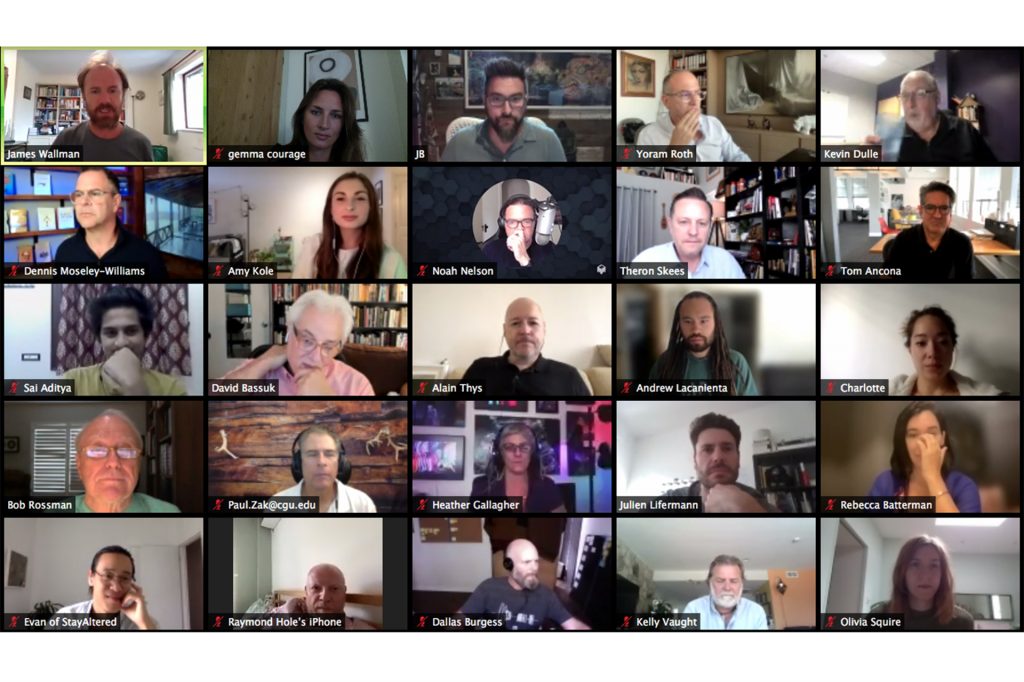Whatever sector of the Experience Economy you’re in, there’s one term you won’t have been able to miss in recent years: the METAVERSE. It seems that everybody wants a slice of it – but what the hell is it, anyway?
Someone who definitely holds the keys to the metaverse is WXO Founding Member Justin Bolognino, founder of the firm Meta. He’s been blending different realities together to create immersive experiences for 20 years, and has spent a lot of time thinking about how to visualise and define the Experience Economy in the process.

We’re always interested in anything that can contextualise – and therefore prove the tangible value of – the Experience Economy. So for the grand finale of season one of our Campfires, we invited Justin to give a Firestarter Talk on his mesmerising, inspiring guide to the Experience Economy: The Map of Realities.
Watch the full talk here. Here’s our four-step summary of what he had to say – and to hear what our Campfire made of his ideas, head to Campfire 19: The Sparks.
1. Reality is the medium of our generation

“The medium is the message,” Marshall McLuhan famously said. And where we once dabbled in wood, stone, paper, celluloid and even digital, today reality itself is the medium that we’re experimenting with when we create experiences.
“Thanks to real-time technologies and the Experience Economy, reality is the medium. It’s what we augment, it’s what we virtualise, it’s what we synthesise. And it not only shows up in industry terms – VR, AR, MR, XR, IRL – but also in everyday life – deep fakes, fake news, AI.”
Justin Bolognino
2. Experiential is giving way to immersive
From creating AR wine labels to XR fashion shows, Justin has been producing multi-reality experiences in what’s traditionally been thought of as the experiential industry for years. However, combining these different realities led him to ask: how do we actually define immersive?
“This used to be called the experience ecosystem, but after a lot of testing, polling and reviews, we decided to go with immersive. We decided that is a wider look at the space, because experiential seems to trigger more the right-hand side of the map than the totality. And really what we’re trying to get at here is an easier clear way to define the industry.”
Justin Bolognino
3. The Map of Realities
To define the industry, Justin has developed the Map of Realities, animated above.
On the right-hand side of the map, there are “analog realities”:
- Sonic (SR): music as an essential component of immersive experiences.
- In Real Life (IRL): physical reality.
- Consciousness (CR): metaphysical reality.
And on the left-hand side, “digital realities”:
- Augmented (AR): bridging the metaverse between analog and digital; the emergent realm.
- Virtual (VR): full digital immersion.
- Online (URL): digital design, live streaming, gaming, and so on.
Different subsets of the industry fall under each category – wellness retreats sit under CR, for example, whereas NFTs are firmly in the VR camp. Justin argues that the real magic can be found on the spectrum between, when you start to mix realities.
“We call each of the six realities ‘the primary realities’, like primary colors. But any color alone is a little bit boring. When you start combining them together, that’s when things really get interesting.”
Justin Bolognino
4. You Are at the center of the metaverse

The six primary Rs may form the Map of Realities, but the key component that sits at the center is “UR” – i.e. You Are.
“Participation, interaction, and the role you play in an immersive experience is its most important part. That, if anything, is the defining characteristic of immersive.”
Justin Bolognino
Seen as a whole like this, the Map of Realities is a marriage of utility and form – an easily understandable and actionable tool with which to create and design for immersive in more efficient and actionable ways.
Want to know how our Campfire responded to Justin’s Firestarter talk? Read more about the sparks that flew afterwards at Campfire 19: The Sparks.





